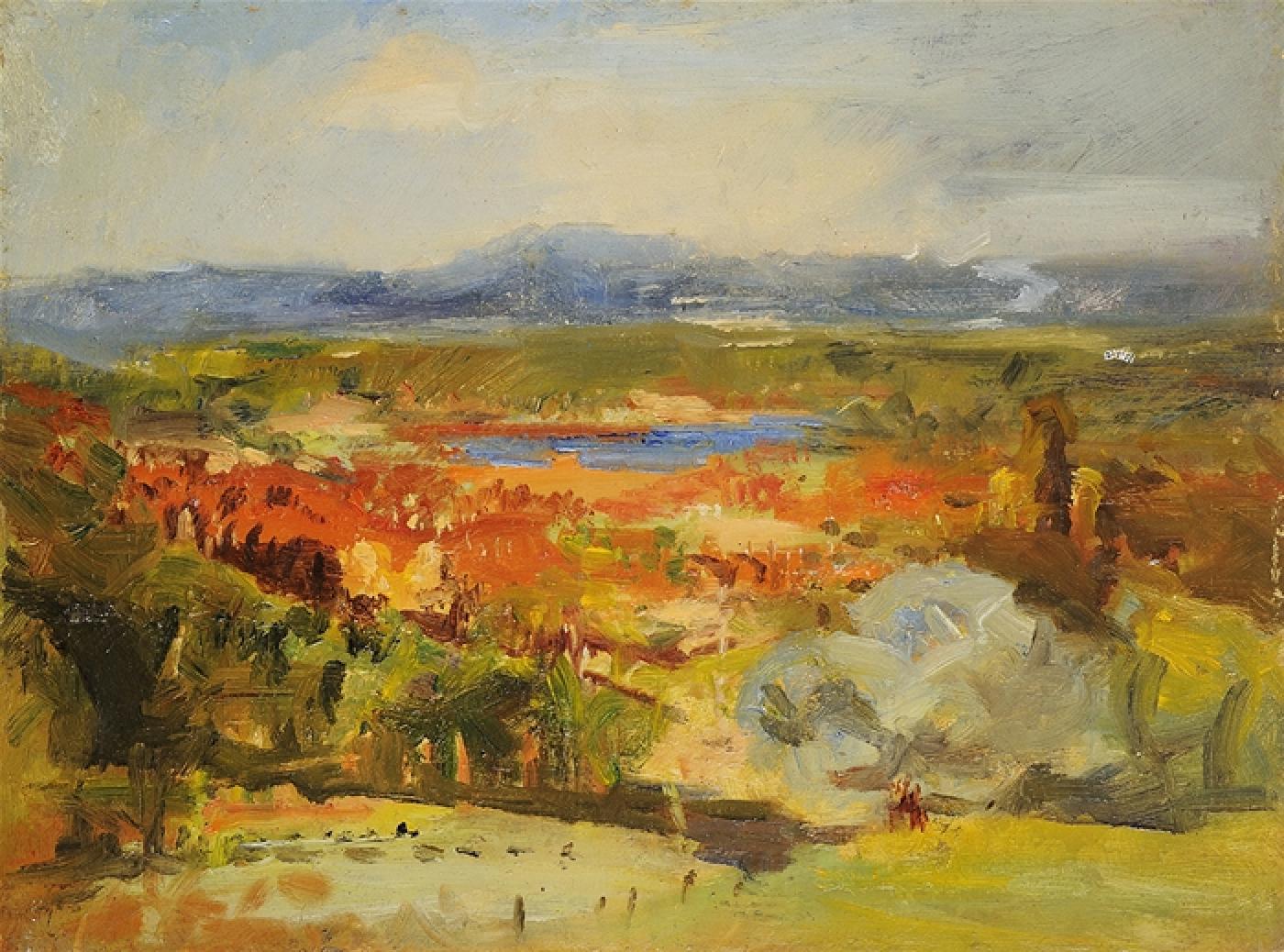An impressionist whose 1930s Kalorama paintings are characterised by strong colours and expressive brushstrokes and use of palette knife.
… he is obsessed with the texture of paint and aims at a jewel-like beauty …” (Brisbane, 1932); “ … newer and more arresting than that [note] struck by .. the most advanced of the cubists-classicists or the youngest members of the landscapes – decoration school” (Gavin Young, Art in Australia, April 1933);
“His work is an unremitting search for volume and intensity of colour. In the process he moved a long way from impressionism and not into any new ‘ism’ but into an intensely personal style.” The Argus, May 1939.
····· Miles Evergood
····· (1871 - 1939)
Words by Charles Nodrum
Born in 1871 in Carlton, Myer Blashki, eleventh child of Hannah and Phillip Blashki, (he was a noted silversmith), grew up in a traditional Jewish migrant family in a rapidly expanding Melbourne.
After studies at the National Gallery School, and exhibiting at the VAS and the RAS in Sydney, he made an unusual move. Whilst virtually all his contemporaries were gravitating to London and Paris in 1898, he moved to San Francisco, and then to New York.
The painterly brushwork that characterised his later work had already evolved by 1900 – the year he married Flora Perry whose merchant father, whilst as uneasy about this union as were the Blashkis in Melbourne, nevertheless settled on his daughter a substantial annual income for life. Her health was never the best and they moved to England in 1910, to be closer to her family who felt an English education for their grandson Phillip to be more appropriate. After studies at Eton, Cambridge and the Slade, Phillip went on to become a noted Social Realist painter in The USA. In 1914, Myer, together with other fellow Australian artists, enrolled in the RAMC, in the same year he changed his surname to the anglicised form of his mother’s maiden name – Evergood – and his first name to Miles, by which he was known thereafter.
With Phillip’s education complete, they returned to New York in 1922 – yet another move that had been, and would continue to be, a repeating motif throughout his life. Flora’s death in 1927 was both a personal and financial blow and in 1931, with his new partner, Polly, he returned to Australia – Brisbane, till 1933, Sydney, till 1935, and Melbourne, till his death in 1939. Here he renewed contact with his artist friends, exhibited his recent works, and participated in the art scene.




